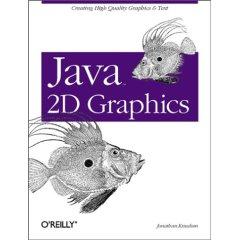| 2020ok Directory of FREE Online Books and FREE eBooks |
Free eBooks > Computers & Internet > Programming > Introductory & Beginning > General > Java 2D Graphics Tutorial
Java 2D Graphics Tutorialby Jonathan Knudsen  Download Book (Respecting the intellectual property of others is utmost important to us, we make every effort to make sure we only link to legitimate sites, such as those sites owned by authors and publishers. If you have any questions about these links, please contact us.) link 1 About Book Amazon.com Java 2D Graphics is a remarkably accessible guide to graphics programming using Sun's new Java 2D API. Besides the basic navigation of the API, this title delivers plenty of useful advanced material for extending Java 2D's capabilities. After a simple introductory example, the book focuses on the graphics architecture of Java 2D and its rendering pipeline. Support classes in Java 2D receive ample coverage as well, with sections outlining topics like storing points, shapes, and paths. For basic graphics output, the book demonstrates the simple--which can be found in the process of drawing common shapes like lines, ellipses, and rectangles--as well as the complex seen in modifying graphics output through translating, rescaling, rotating, or shearing. Text output in Java 2D receives its due as well, since the book acknowledges Java 2D's advanced font capabilities that allow it to handle right-to-left languages such as Arabic. Further sections delve into Java 2D color models (including support for the CIEXYZ and sRGB color standards). Concerning the display of images, the book covers the built-in support for image filtering in Java 2D, which allows programmers to build toggles and fades into their code that alter brightness, contrast, blurring, and sharpening. For advanced readers, Java 2D Graphics presents techniques like double buffering and matrix operations for custom image effects. Another expert section on the internal storage classes for image data will be useful for those who want to write image decoders. (A sample PNG decoder shows off the basics here.) Final sections look at printing, animation, and performance issues. In all, Java 2D Graphics provides a fine introduction to the latest in 2-D graphics programming from Sun, in a title that will be useful to both beginning and advanced Java developers. --Richard Dragan
Related Free eBooks
| Related Tags |












pranab, 2008-02-06 02:59:10
SEND A COMMENT
PLEASE READ: All comments must be approved before appearing in the thread; time and space constraints prevent all comments from appearing. We will only approve comments that are directly related to the article, use appropriate language and are not attacking the comments of others.